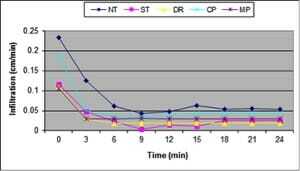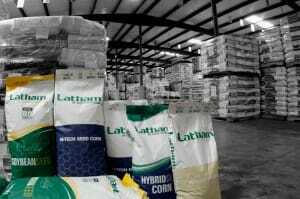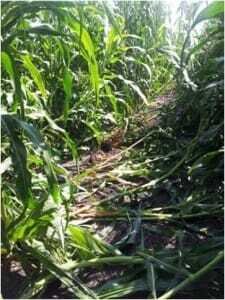 guest blog post by Mark Licht, ISU Extension and Outreach
guest blog post by Mark Licht, ISU Extension and Outreach
Current weather pattern trends are causing some concern that moisture reserves will be depleted for the 2013 crop. While we can’t control the weather, we can help manage soil moisture reserves by reducing tillage.
Reducing fall tillage will help conserve soil moisture as each tillage pass can lead to ¾ of an inch of plant available water. Tillage reduces water infiltration by breaking large pores, and the small pores are clogged by the dislocation of soil particles. Raindrops break the soil aggregates, which clog soil pores leading to slow water infiltration and increases surface runoff. Additionally, subsequent rains result in more runoff because of potential soil crusting. Research has shown a significant decrease in water infiltration rate as the intensity of tillage increased as shown in the figure below.

Three reasons why farmers should consider avoiding fall tillage this year include:
- Crop residue moderates soil temperature, leading to less soil moisture evaporation.
- Residue helps reduce the amount of wind at the soil surface, which helps further reduce soil moisture evaporation.
- Soil compaction due to equipment traffic was minimal due to dry conditions from planting through harvest 2012.
There is no reason to allocate time and fuel for deep tillage; the normal freeze/thaw cycles should alleviate any mild compaction that resulted.
Another benefit of leaving standing corn residue is that it can help catch snow that would otherwise blow across the surface and pile up somewhere else. Eight to 16 inch corn stalks hold more snow than bare soil. Additionally, corn stalks will help reduce runoff and increase infiltration of snow melt in the spring. This could mean another 1 or 2 inches of soil moisture next spring.
A final reason to forego tillage this fall is because Goss’s Wilt was not a large concern in 2012. Goss’s Wilt survives the winter on corn residue, but because there was minimal presence this year, there is no need for tillage this fall to further reduce risk in 2013.










